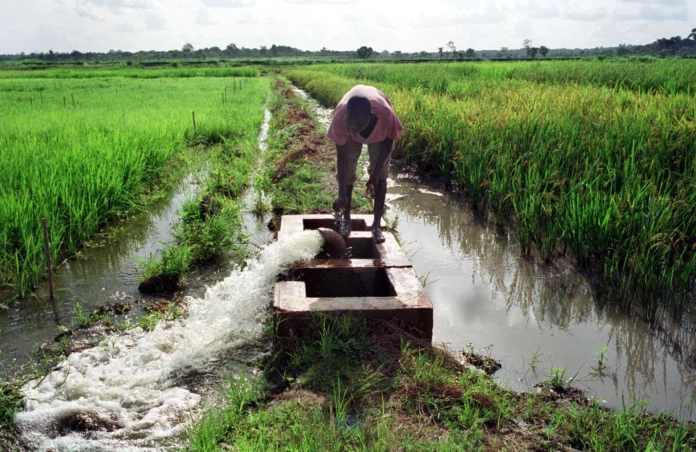Arabfields, Japan — As the deadline for public submissions closed on October 21, 2025, Japan’s Consumer Affairs Agency (CAA) is now sifting through feedback on its proposal for voluntary front-of-pack (FOP) nutrition labels, a move aimed at empowering consumers to make healthier food choices amid ongoing national efforts to combat lifestyle-related diseases.
This initiative, part of a broader government strategy launched in 2024 to promote better nutrition and sustainable dietary habits, seeks to address persistently low consumer awareness of existing nutrition information, which has been mandatory on the back of food packaging since 2015. By placing key nutritional data prominently on the front, the CAA hopes to foster informed decisions and potentially spur industry innovation in product formulations.
Japan’s current food labeling regulations, enforced under the Food Labeling Act, require detailed disclosures of ingredients, additives, allergens, and per-serving nutritional values such as energy, protein, fat, carbohydrates, and sodium. However, these details are typically relegated to the back or side of packaging, often in small print, leading to underutilization by shoppers. Surveys have shown that many Japanese consumers overlook this information, contributing to suboptimal dietary choices despite the country’s relatively low obesity rates compared to global averages.
The push for FOP labels gained momentum in 2024 as part of the Ministry of Health, Labour and Welfare’s (MHLW) comprehensive nutrition policy, which emphasizes balanced diets and preventive healthcare to tackle rising concerns over obesity, diabetes, and other non-communicable diseases. Although Japan’s obesity prevalence, defined as a body mass index (BMI) of 25 kg/m² or higher, stands at about 33% for men and 22% for women, far below Western levels, the economic burden of overweight and obesity was estimated at US$50.81 billion in 2019, equivalent to 1% of GDP. With an aging population and shifting lifestyles, including increased consumption of processed foods, officials aim to halt any upward trends in these rates by 2025.
Discussions on FOP labeling began in earnest with a series of meetings starting in 2024, culminating in the fifth session on March 6, 2025, where the CAA presented draft guidelines. These guidelines position FOP labeling as a voluntary standalone initiative, separate from mandatory standards, to ease implementation for businesses while aligning with existing health promotion efforts.
The CAA’s draft, released on September 22, 2025, outlines a simple graphic format to be displayed in an easily visible location on food packages. It includes five key nutrients per serving: energy in kilocalories (kcal), protein, fat, total carbohydrates, and salt equivalent in grams, alongside percentages of recommended daily intakes. These percentages are calculated based on the “Dietary Reference Intakes for Japanese” for adults aged 18 and older, weighted by population demographics.
The CAA opened a public consultation in early October 2025, with submissions due by October 21. A review meeting is slated for the coming weeks, with final recommendations expected by March 31, 2026.
Feedback from the food sector has been mixed, with some trade bodies withholding immediate comments. The Japan Food Industry Association, a key stakeholder, declined to provide statements when contacted.
Major players like Asahi Group Holdings, which produces snacks and soups, are taking a wait-and-see approach. A company spokesperson noted, “Once the guidelines are issued, we will carefully consider how to respond, taking into account customer needs, product features, and the characteristics of our target consumers.”
Experts, however, see potential benefits. Hiroyuki Kawai, CEO of Label Bank Co. Ltd., a consultancy specializing in Japanese labeling regulations, expressed optimism. “The draft guidelines were formulated with consideration for ease of implementation by companies in the food industry,” Kawai said. “I believe that if the labelling formats are straightforward and the information they provide is easy to understand, then they will gain support.”
Kawai further suggested that FOP labels could drive reformulation. “If displaying the percentage of a daily intake value is seen as a disadvantage when an item is compared to a competing product, that could potentially lead to a manufacturer adjusting its ingredients and, ultimately, serving as a catalyst for innovation and changing product formulations,” he added. He also highlighted positive effects for products with health claims, such as low-sodium or fortified items.
Proponents argue that FOP labels could significantly boost consumer awareness and behavior. International studies indicate that such labels are more visible than back-of-pack information and can guide healthier choices across socioeconomic groups. For instance, systems like France’s Nutri-Score have improved perceptions of food healthiness, while Chile’s warning labels have discouraged purchases of high-sugar, high-fat products.
Evidence also shows industry responses: In markets with FOP labeling, products often undergo reformulation to achieve better ratings, resulting in overall healthier compositions. A Dutch study found labeled products had more favorable nutrient trends compared to unlabeled ones. In Japan, where demand for healthier options is growing, fueled by digital health solutions and personalized nutrition, this could accelerate market shifts.
However, challenges remain. Critics worry about potential consumer confusion if formats are not intuitive, and the voluntary aspect may lead to inconsistent adoption. Ongoing evaluations post-implementation will be crucial to assess effectiveness.
Japan’s proposal draws inspiration from global models but opts for a neutral, interpretive format without color-coding or warnings, differing from the UK’s traffic light system, which uses red, amber, and green to signal high, medium, and low nutrient levels. In contrast, Latin American countries like Chile and Mexico employ black octagonal warnings for excessive sugar, salt, or fat, which have led to notable reductions in unhealthy purchases.
Australia and New Zealand’s Health Star Rating, a graded system from 0.5 to 5 stars, has encouraged reformulation, with studies showing improved consumer purchasing intentions. Nordic countries use endorsement logos like the Keyhole symbol for healthier options.
These examples underscore FOP labeling’s role in public health policy, with a 2025 review highlighting their ability to nudge consumers toward better choices and prompt industry changes. For Japan, adopting a voluntary approach may facilitate smoother integration, but experts recommend monitoring to ensure it doesn’t dilute impact.
With feedback now under review, the CAA plans to refine the guidelines based on input from stakeholders, including further discussions after June 2025. Final publication by March 2026 could mark a pivotal step in Japan’s health agenda, potentially influencing dietary patterns in a nation renowned for longevity but facing modern nutritional challenges.
As Kawai noted, “As the new labels will display details on daily intake, I think this will have a positive effect on products that presently make claims about being beneficial.” Whether this voluntary system evolves into something more mandatory remains to be seen, but it represents a proactive effort to align food transparency with public health goals.












